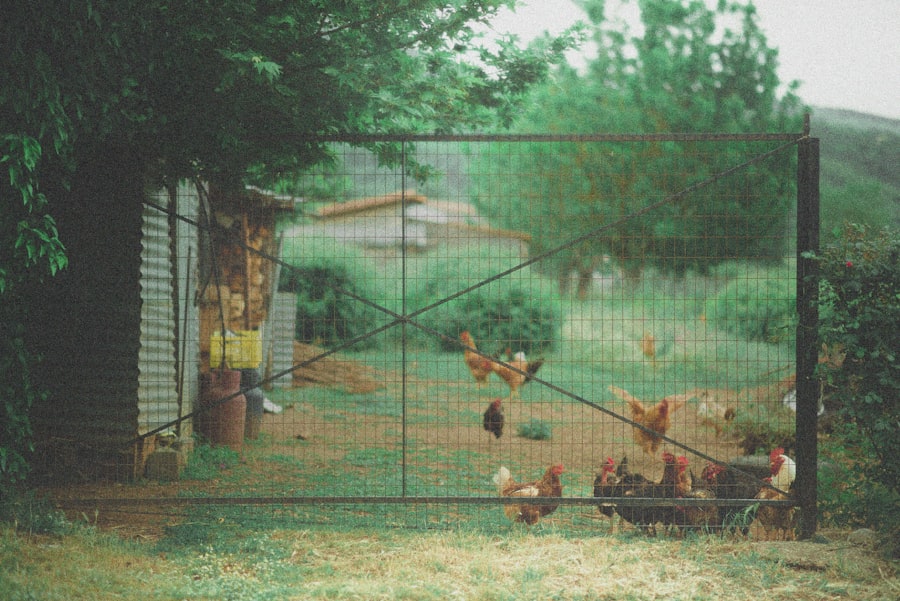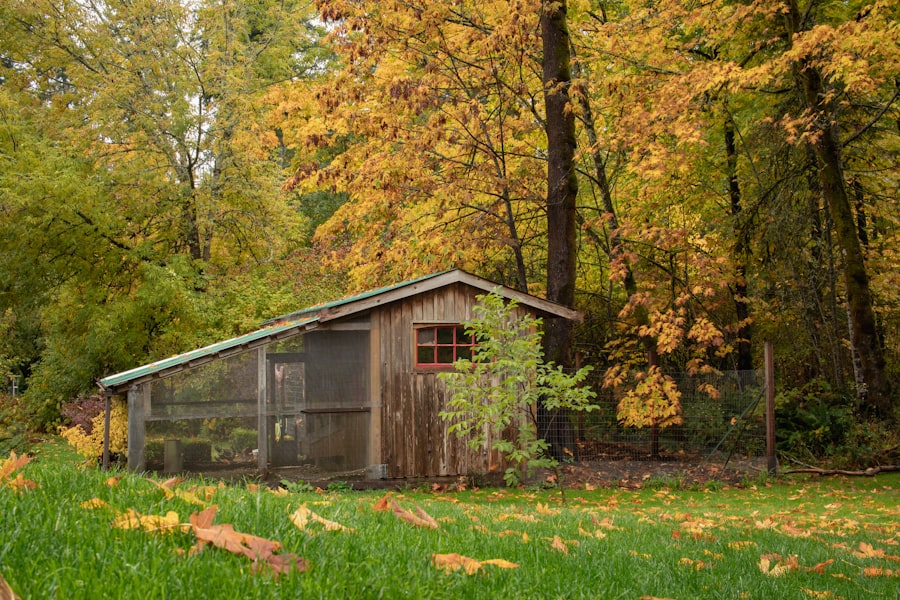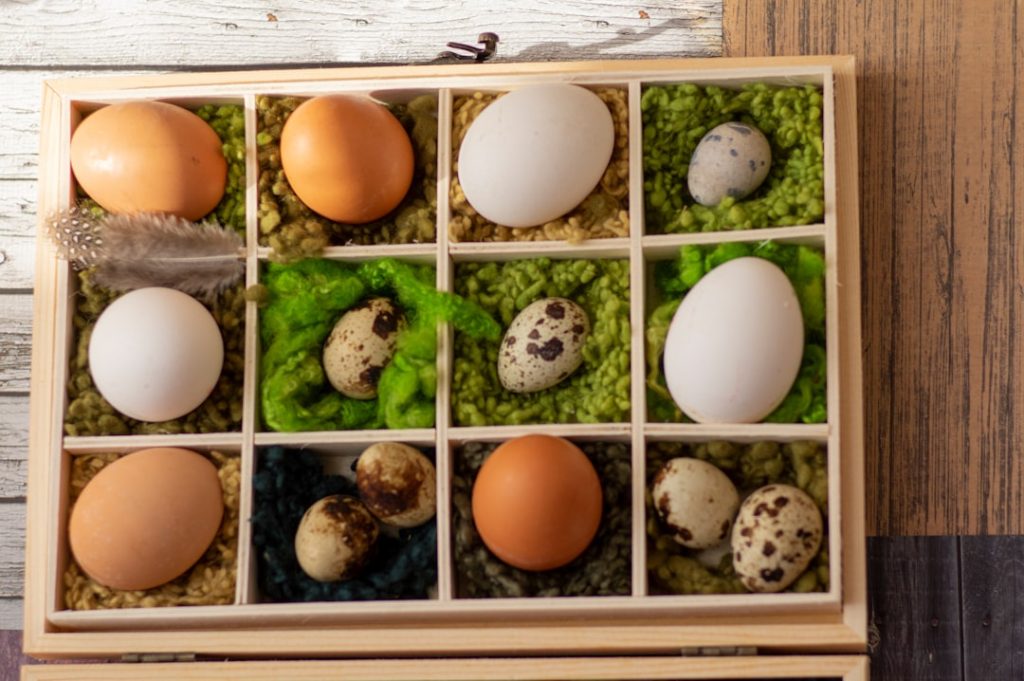Indoor chicken keeping has become increasingly popular in recent years, particularly in urban and suburban environments where outdoor space is limited. While chickens have traditionally been housed in outdoor coops and runs, some poultry enthusiasts opt to keep their birds indoors. This can be accomplished using a purpose-built indoor coop or by creating a designated area within the home.
Indoor chicken keeping requires careful planning and attention to detail to maintain the health and welfare of the birds. This article will examine the motivations behind indoor chicken keeping, the important factors to consider, and the process of transitioning chickens from an indoor environment to an outdoor setting when appropriate.
Table of Contents
- 1 Understanding the Reasons for Keeping Chickens Inside
- 2 Considerations for Keeping Chickens Inside
- 3 How Long Should Chickens Be Kept Inside
- 4 Signs That Chickens Are Ready to Go Outside
- 5 Tips for Transitioning Chickens from Inside to Outside
- 6 Conclusion and Final Thoughts on Keeping Chickens Inside
- 7 FAQs
- 7.1 What is the recommended age to start letting chickens outside?
- 7.2 How long should chickens be kept inside before being let outside?
- 7.3 What factors should be considered before letting chickens outside?
- 7.4 What are the benefits of letting chickens outside?
- 7.5 Are there any risks to letting chickens outside?
Key Takeaways
- Keeping chickens inside can be a practical and convenient option for many reasons.
- Understanding the reasons for keeping chickens inside, such as weather, safety, and health concerns, is important for making the decision.
- Considerations for keeping chickens inside include providing adequate space, ventilation, and access to food and water.
- Chickens should be kept inside for as long as necessary to ensure their safety and well-being, but they should also be given opportunities for outdoor time when possible.
- Signs that chickens are ready to go outside include feather growth, increased activity, and a desire to explore. Transitioning them from inside to outside should be done gradually and with care.
Understanding the Reasons for Keeping Chickens Inside
Protecting from Predators and Controlling the Environment
One of the main reasons chicken owners choose to keep their birds inside is to protect them from predators. In urban and suburban areas, predators such as raccoons, foxes, and even neighborhood dogs can pose a serious threat to outdoor chickens. By keeping the chickens inside, owners can ensure their safety and reduce the risk of predation. Additionally, keeping chickens inside can also help to control the temperature and environment in which the birds are kept. In extreme weather conditions, such as during very hot or cold seasons, keeping chickens inside can provide a more stable and comfortable environment for the birds.
Practical Solutions for Limited Space and Zoning Regulations
Keeping chickens inside can also be a practical solution for those who have limited outdoor space or live in areas with strict zoning regulations regarding the keeping of livestock. This can be especially important for those who want to keep chickens but are restricted by their living situation.
The Drawbacks of Keeping Chickens Inside
On the other hand, there are also some potential drawbacks to keeping chickens inside. Chickens naturally thrive in outdoor environments where they can scratch and peck at the ground, dust bathe, and forage for insects and plants. Keeping them inside may limit their ability to engage in these natural behaviors, which can have negative effects on their physical and mental well-being. Additionally, indoor environments can be more challenging to keep clean and odor-free, requiring regular maintenance and cleaning to ensure a healthy living space for the chickens.
Weighing the Decision
It’s important for chicken owners to carefully weigh the pros and cons of keeping chickens inside before making this decision. By considering the benefits and drawbacks, owners can make an informed choice that prioritizes the health and well-being of their chickens.
Considerations for Keeping Chickens Inside

When considering keeping chickens inside, there are several important factors to take into account. First and foremost, it’s crucial to provide adequate space for the chickens to move around and engage in natural behaviors. This means ensuring that the indoor coop or area is large enough to accommodate the number of chickens being kept and that it includes perches, nesting boxes, and areas for dust bathing.
Proper ventilation is also essential to maintain good air quality and prevent the buildup of ammonia from chicken droppings. Additionally, providing access to natural light or full-spectrum lighting can help to support the chickens’ health and egg production. Another important consideration is the type of flooring and bedding used in the indoor coop.
The flooring should be easy to clean and disinfect, such as linoleum or concrete, and the bedding material should be absorbent and comfortable for the chickens to walk and rest on. Regular cleaning and maintenance of the coop are essential to prevent the buildup of bacteria and parasites that can harm the chickens’ health. Finally, it’s important to consider the noise and odor that may come with keeping chickens inside, especially for those living in close proximity to neighbors.
Taking steps to minimize noise and odor through proper ventilation, cleaning routines, and soundproofing can help to mitigate these potential issues.
How Long Should Chickens Be Kept Inside
The length of time that chickens should be kept inside will depend on various factors, including the reason for keeping them inside and the specific needs of the individual birds. If chickens are being kept inside to protect them from predators or extreme weather conditions, they may need to remain indoors for an extended period of time. In these cases, it’s important to provide ample space, enrichment, and social interaction for the chickens to prevent boredom and stress.
On the other hand, if chickens are being kept inside temporarily due to illness or injury, they may only need to be indoors until they have fully recovered. It’s important for chicken owners to regularly assess the well-being of their indoor chickens and monitor their behavior and health. If chickens show signs of stress or boredom, such as feather picking or aggressive behavior, it may be necessary to find ways to provide more stimulation or consider transitioning them back outside if conditions allow.
Ultimately, the goal should be to provide a healthy and enriching environment for the chickens, whether they are kept inside or outside.
Signs That Chickens Are Ready to Go Outside
When considering transitioning chickens from inside to outside, it’s important to look for signs that indicate they are ready for the change. One of the most obvious signs is when the weather becomes more favorable for outdoor living, such as during warmer spring months. Chickens will often become more active and vocal when they are ready to go outside, showing excitement at the prospect of exploring a new environment.
Additionally, if chickens have been kept inside due to illness or injury, they may show signs of improved health and vitality when they are ready to return outdoors. It’s also important to observe how the chickens interact with each other and their environment. If they are displaying natural behaviors such as scratching at the ground, dust bathing, and foraging for insects or plants, this is a good indication that they are ready to be reintroduced to an outdoor setting.
However, it’s important to monitor their behavior closely during the transition period to ensure they are adapting well to their new environment.
Tips for Transitioning Chickens from Inside to Outside

Gradual Introduction to the Outdoors
When transitioning chickens from inside to outside, it’s essential to do so gradually to minimize stress and ensure a smooth adjustment. Start by allowing the chickens supervised access to an outdoor area during the day, gradually increasing the amount of time they spend outside over several days or weeks. This will give them time to acclimate to the new environment while still having the security of returning indoors if needed.
Providing Enrichment in the Outdoor Area
It’s also important to provide plenty of enrichment in the outdoor area, such as perches, dust bathing areas, and opportunities for foraging. This will help keep the chickens engaged and stimulated as they explore their new surroundings. Additionally, it’s important to monitor their behavior closely during this transition period and be prepared to intervene if any issues arise.
Ensuring Safety and Security
Finally, it’s crucial to ensure that the outdoor area is secure from predators and that the chickens have access to shelter and protection from the elements. This may involve reinforcing fencing or adding additional predator-proofing measures to their outdoor coop or run.
Conclusion and Final Thoughts on Keeping Chickens Inside
Keeping chickens inside can be a practical solution for protecting them from predators or extreme weather conditions, especially in urban or suburban environments. However, it’s important for chicken owners to carefully consider the needs of their birds and provide a healthy and enriching indoor environment. Regular monitoring of the chickens’ behavior and health is essential to ensure their well-being while indoors.
When transitioning chickens from inside to outside, it’s important to do so gradually and provide plenty of enrichment in their outdoor environment. By taking these steps, chicken owners can help ensure a smooth transition for their birds as they return to outdoor living. In conclusion, keeping chickens inside can be a viable option under certain circumstances, but it requires careful planning and consideration of the birds’ needs.
With proper care and attention, indoor chickens can thrive in a safe and enriching environment until they are ready to return outdoors.
If you’re wondering how long you have to keep chickens inside, you may also be interested in learning about converting a shed into a chicken coop. This article from Poultry Wizard provides helpful tips and guidance on how to repurpose a shed to create a comfortable and safe living space for your feathered friends.
FAQs
What is the recommended age to start letting chickens outside?
The recommended age to start letting chickens outside is around 6-8 weeks old. At this age, they are better equipped to handle the outdoor environment and have developed their feathers for better insulation.
How long should chickens be kept inside before being let outside?
Chickens should be kept inside for about 6-8 weeks before being let outside. This allows them to grow and develop properly before being exposed to the outdoor environment.
What factors should be considered before letting chickens outside?
Before letting chickens outside, factors such as the weather, predator protection, and the availability of food and water should be considered. It’s important to ensure that the outdoor environment is safe and suitable for the chickens.
What are the benefits of letting chickens outside?
Letting chickens outside allows them to engage in natural behaviors such as scratching, pecking, and dust bathing. It also provides them with access to fresh air, sunlight, and a more varied diet, which can contribute to their overall health and well-being.
Are there any risks to letting chickens outside?
There are risks to letting chickens outside, including exposure to predators, extreme weather conditions, and potential transmission of diseases from wild birds. It’s important to take measures to mitigate these risks, such as providing secure housing and regular health checks for the chickens.
Meet Walter, the feathered-friend fanatic of Florida! Nestled in the sunshine state, Walter struts through life with his feathered companions, clucking his way to happiness. With a coop that’s fancier than a five-star hotel, he’s the Don Juan of the chicken world. When he’s not teaching his hens to do the cha-cha, you’ll find him in a heated debate with his prized rooster, Sir Clucks-a-Lot. Walter’s poultry passion is no yolk; he’s the sunny-side-up guy you never knew you needed in your flock of friends!







